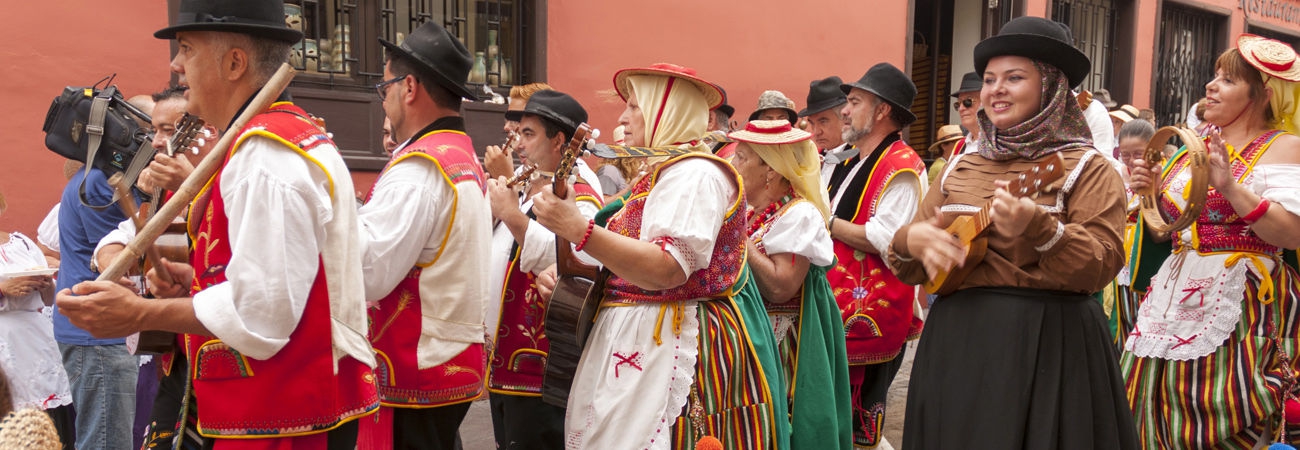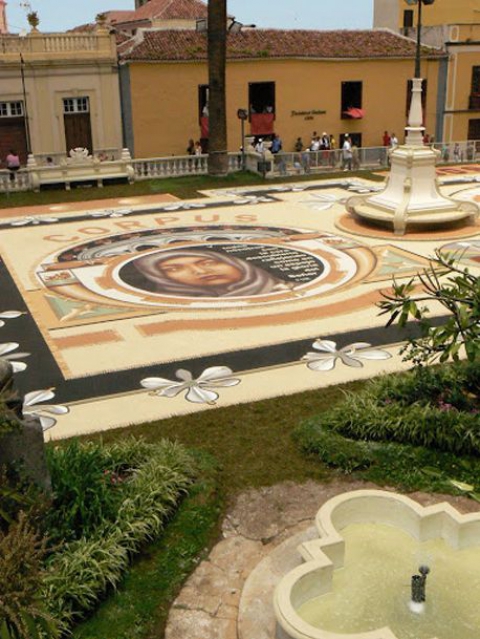Romería de San Isidro (La Orotava)
LA OROTAVA CARPETS, EIGHTH OF CORPUS CHRISTI
The fiesta is held in June. The borough worships the Lord Jesus by making carpets to cover the streets along which the procession is going to pass, of flower petals and other natural elements. The finest of these fiestas is undoubtedly the one held in La Orotava. The Religious service is held with great solemnity, attended by most of the town's inhabitants.
The procession is led by the Bishop of La Laguna, clergy from the Diocese, parishes and brotherhoods from Archpriest's Office, the Mayor and council of La Orotava, members of the Island Cabildo (Government), civil and military authorities, the queen of the festival and the municipal band. Several days beforehand, local families and companies design the carpet on paper or straw matting. The outline is later filled in with petals. While men and children lay out the design, the women prepare the petals.. Everybody in town takes part, highlighting the borough's social structure.. The most spectacular carpet is the one that is made in Plaza del Ayuntamiento.. It is made from different coloured volcanic sands from the highland areas of Cañadas del Teide.. It represents three different biblical scenes. None of the figures, images or floral carpets are repeated in later years.
This multicoloured carpet of volcanic sands from Las Cañadas del Teide covers an area of 912 square metres. The square measures 950 square metres. The volume of earth needed to make this masterpiece is 27 cubic metres, equivalent to 3,000 kilos of materials.
Town Council, Fiestas Committee, residents associations, public agencies and individual families all contribute to the splendour of the Corpus Christi celebrations.
SAN ISIDRO POPULAR PILGRIMAGE
The San Isidro festivities have been celebrated in La Orotava ever since the second half of the 17th century. It used to be a festival for field hands and farmers, held on the 15th of May in the church of Nuestra Señora de la Piedad, on the outskirts of town. The festivities were first devoted to San Isidro Agrícola in the 17th century.
The fiestas have changed profoundly since then, from being a tribute by field hands to their Patron Saint, to come under the control of the local aristocracy. The custom of putting up arches and a globe has been lost. The festivities are now held in June and the most popular events are the livestock fair and the popular pilgrimage. Carts are pulled by oxen, people wear traditional country costume and the women of the town decorate their balconies and windows with carpets, table cloths and shawls. The town council and the Liceo Taoro take an active part in the festivities.








